We’ve all heard of Santa Claus – he lives in the North Pole with his elves, who work all year making toys and presents. He has a list of names, and the good children get toys and the bad ones just get a lump of coal. At least that’s what my mother tells me.
This iteration of Christmas and Saint Nicholas is known the world over, but there are plenty of destinations with their own unique traditions and tales during this festive time of year. Let’s take a look at eight unusual Christmas customs and tales from around the world – see if you can guess which location is home to each tradition:
1. (Burning the) Yule Goat
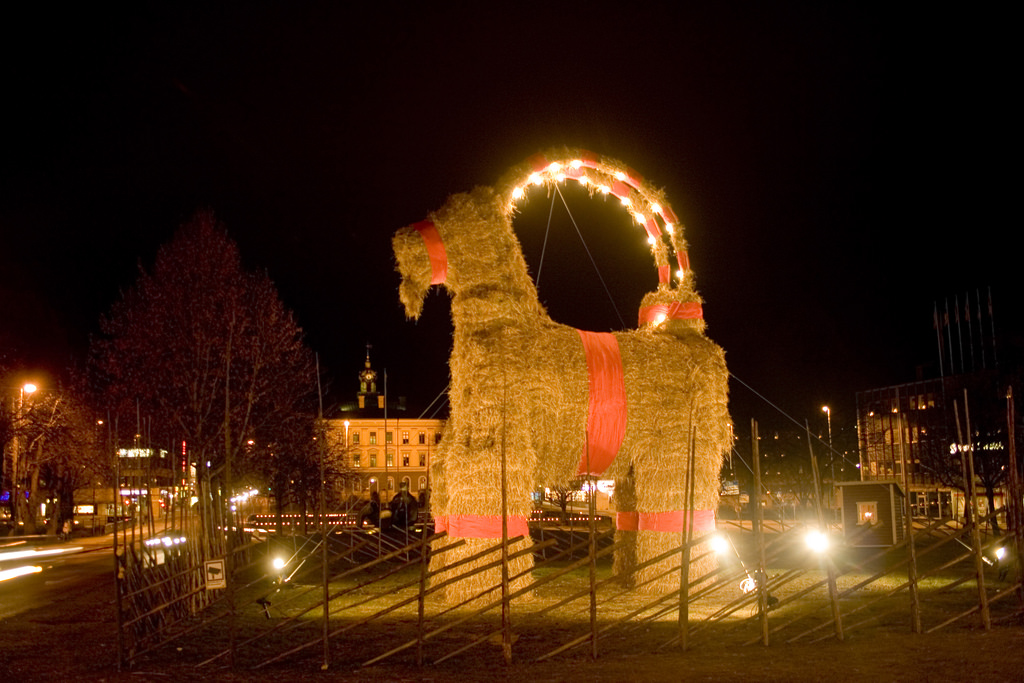
The Gävle Goat is a tradition that started off in the 60s – a traditional Yule Goat ornament-turned-Christmas display at Slottstorget in Central Gävle. Erected each year at the beginning of Advent (usually end of November), the goat takes two days to be completely assembled by local community groups. What’s special about goat is that for the past 40 years, it’s been burned down a total of 36 times.
The burning of the Yule Goat has taken root in this country’s culture as a quirky – and illegal – tradition. Despite security measures such as dousing it in flame retardant, posting security guards and using 24-hour security cameras, revellers have managed to sneak through and set fire to it – and yes, even the ‘flame-retardant’ goat was burnt down.
2. Krampus
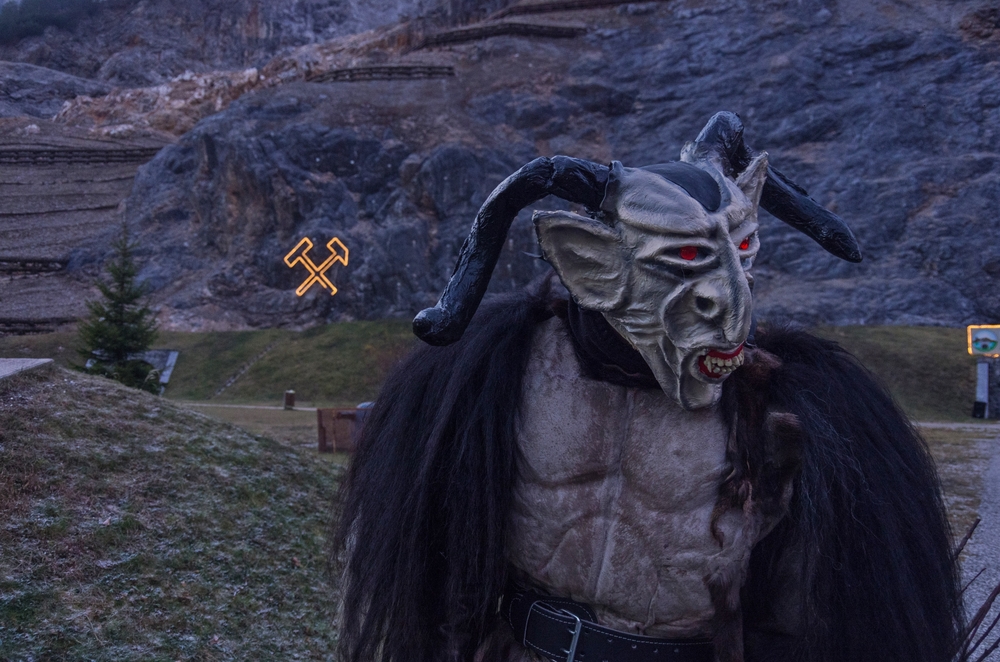
Far from cheerful, Krampus is a half-goat, half-demon figure that is the antithesis to Santa Claus. Krampus is a companion of Saint Nicholas who goes around punishing children who have misbehaved. The origins of Krampus is unknown but according to legend, the creature carries around a bundle of sticks and a whip to punish ‘bad’ children, and then take them down to hell for a year. The name Krampus is thought to be derived from the word krampen, meaning claw.
According to National Geographic, Krampus is believed to be the son of the Norse Goddess, Hel, who oversees the underworld. In modern times, there’s a parade or Krampuslauf (Krampus run) where young men dress up as Krampus, wearing masks of a devilish monsters with ram horns.
3. Zwarte Piet
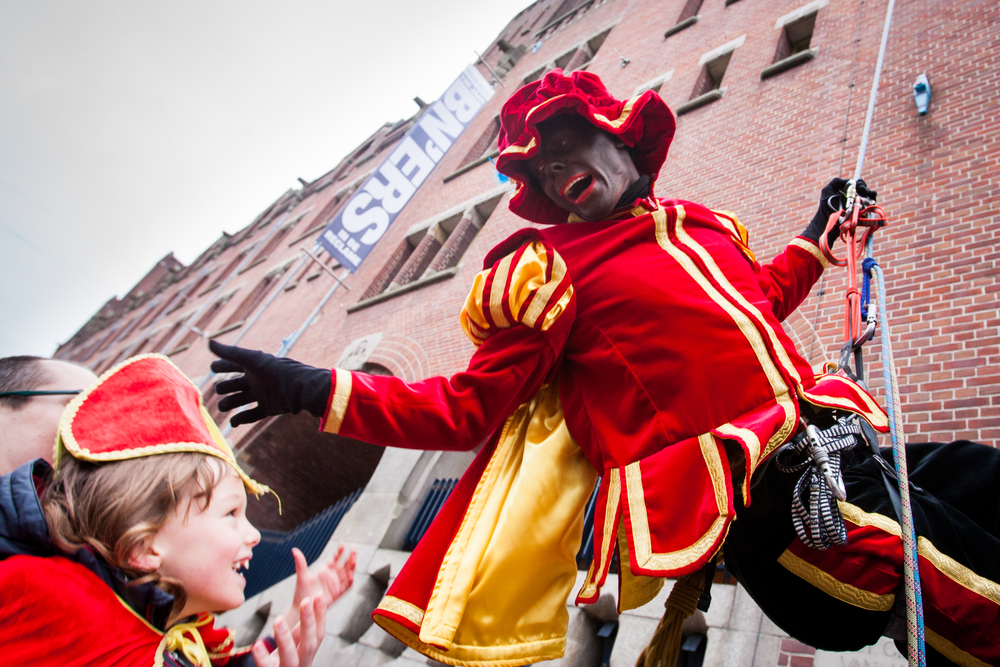
In this country, Santa, aka Sinterklaas, has a different companion, a young man called Black Peter – or Zwarte Piet. This character is usually a person with black face paint, exaggerated full lips, and afro hair. The most common story, of many surrounding the origin of the Zwarte Piet, follows a song that says Sinterklass punishes bad children by carrying them off to Spain. Black Peter helps Sinterklass to identify and capture misbehaving children.
The festival, Sinterklaasavond (St.Nicholas’ Eve) is celebrated on the 5th of December each year, on the 11th day of Christmas. It’s a big to-do – Sinterklass is welcomed with a parade, having arrived on a boat from Spain with his companion, Zwarte Piet.
The modern function of Zwarte Piet is amuse children and scatter sweets, but in the past few years, this character is coming under fire for racism, because of the black face paint and the fact that Zwarte Piet is often described as a Moor (a derogatory term for dark skinned people). Protesters have called for the festival to be cancelled or proposed changing Zwarte Piet into a multicoloured man instead.
4. The fortune telling shoe
Superstitions are part of every culture and festive seasons tend to bring along more superstitions that any other time of year. At this time of year, an unmarried woman will throw a shoe towards the door over her shoulder. The direction of how the shoe lands will signal marriage within the year, or not. If the shoe lands with the toe facing the door, she’ll be married within a year and if it doesn’t, she’ll remain unmarried for a least another year.
5. Caganer

Caganer, which translates to ‘The cr*pper’ or ‘the defecator’ is one of Catalonia’s unusual Christmas traditions that still thrives today. The caganer is a figurine of a Catalan man tending to nature’s call, usually hidden in a nativity scene.
The traditional caganer is of a man wearing a typical catalan red hat and peasant shirt with his pants down, in squatting position. However, in modern times, the caganer has been modelled on celebrities, politicians – including even the Pope, Darth Vader, Neymar, Spiderman, Prince Charles, Queen Elizabeth II. It’s actually considered a sign of respect.
The origin of this figure is unclear but many theories surround it. One suggests that a caganer symbolizes fertility and the superstition goes that if someone sets up a nativity scene without a caganer, their upcoming harvest will be bad. Another theory says that the figure is meant to demonstrate that no one can be prepared for the coming of Jesus. Either way, this peculiar tradition is still popular in Catalonia and many nativity scenes, even ones set up by local councils, will include a hidden caganer.
6. Mari Lwyd
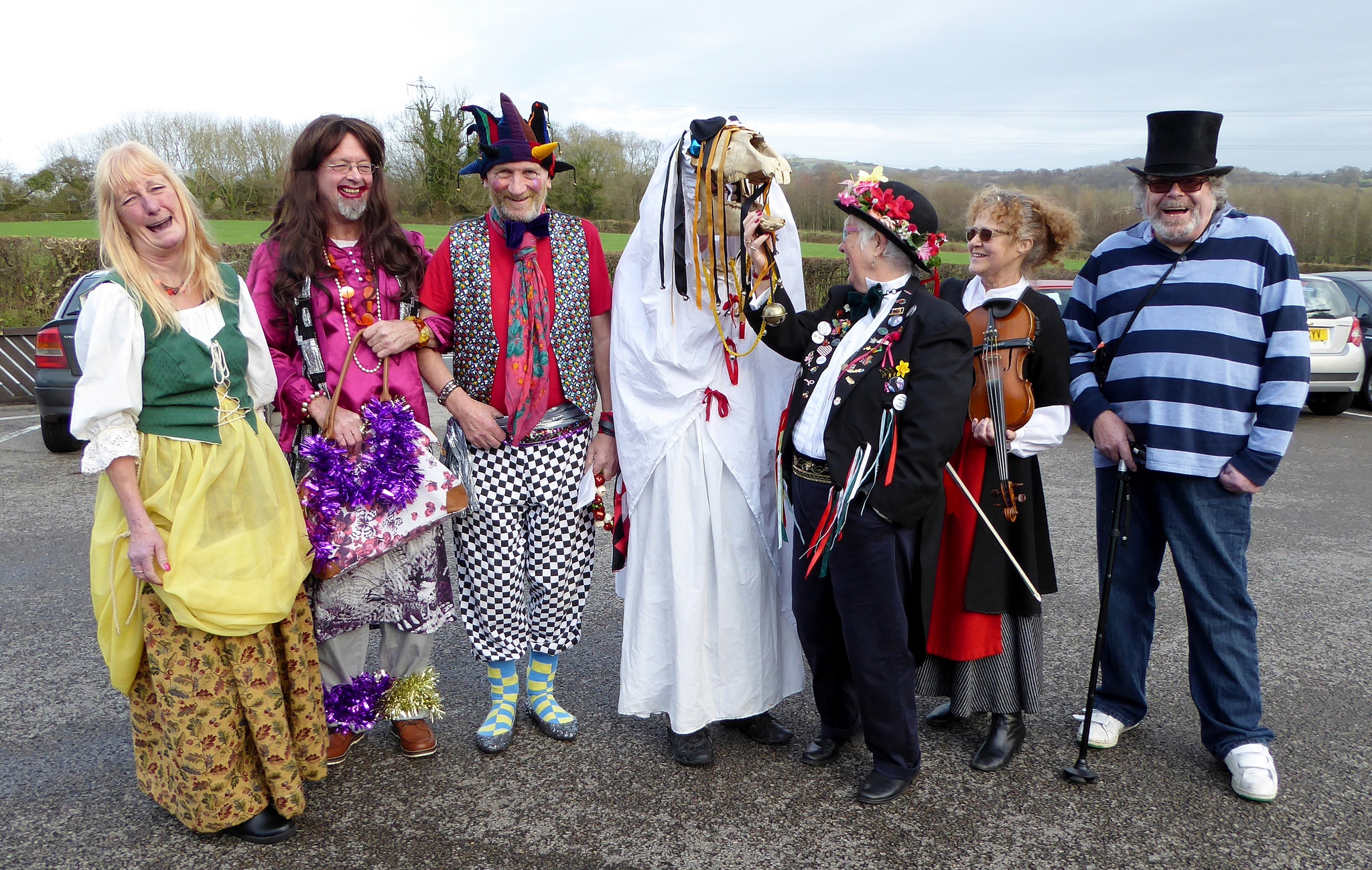
This Welsh custom is a mid-winter tradition performed by groups of men. A horse’s skull has ears stuck to it and is mounted on a pole which is covered by a sack cloth. The Mari Lwyd (grey mare) and his team then goes door-to-door to request entry into houses via a song. What ensues is a song battle known as pwnco when the house inhabitants deny the team entry via a witty verse.
The back-and-forth rhyming continues depending on how creative the two parties are. At the end, Mari Lwyd enters the house for some treats and drinks before moving on to the next house. Of course, with all that thinking and rhyming, the Mari Lwyd party tended to be quite rambunctious towards the end of the night, causing a ruckus wherever they went.
Because of that, the tradition died down for a bit in the late 1800s but it saw a slow revival around 1930s. Eventually, small towns around Wales started practicing this and now, more people are celebrating this custom, though with a little more restraint and fewer rhyme battles.
7. La Befana the Christmas witch
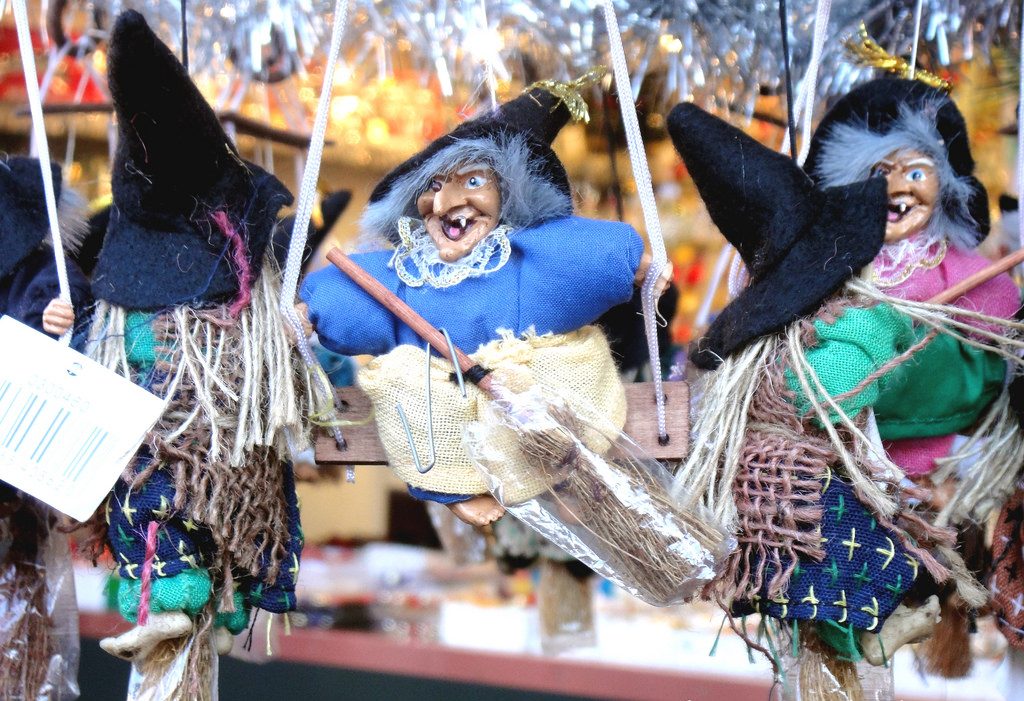
According to legend, Befana was an old woman, approached by the Three Wise Men who were looking for directions to Jesus’s manger. She provided them shelter for a night and they invited her to join them on their journey but she declined. Later, she changed her mind later and tried to find them, but she wasn’t able to. Legend has it that Befana still roams, looking for baby Jesus. Now, she brings gifts for children on the eve of Epiphany, the twelfth day of Christmas.
The legend goes that Befana will fill childrens’ shoes with candy if they are good and a lump of coal if they are bad, similar to Santa. Instead of milk and cookies, though, families leave a small glass of wine and some food for Befana. Usually portrayed as an old lady wearing a black shawl and covered in soot from entering through the chimney, Befana flies around on her broomstick with a bag filled with candy and gifts, smiling as she delivers her treats.
In some areas, it’s said that Befana leaves a lump of coal (usually coloured rock candy) in every child’s shoe or stocking since everyone would have misbehaved at least a little in the past year.
8. Kallikantzaroi
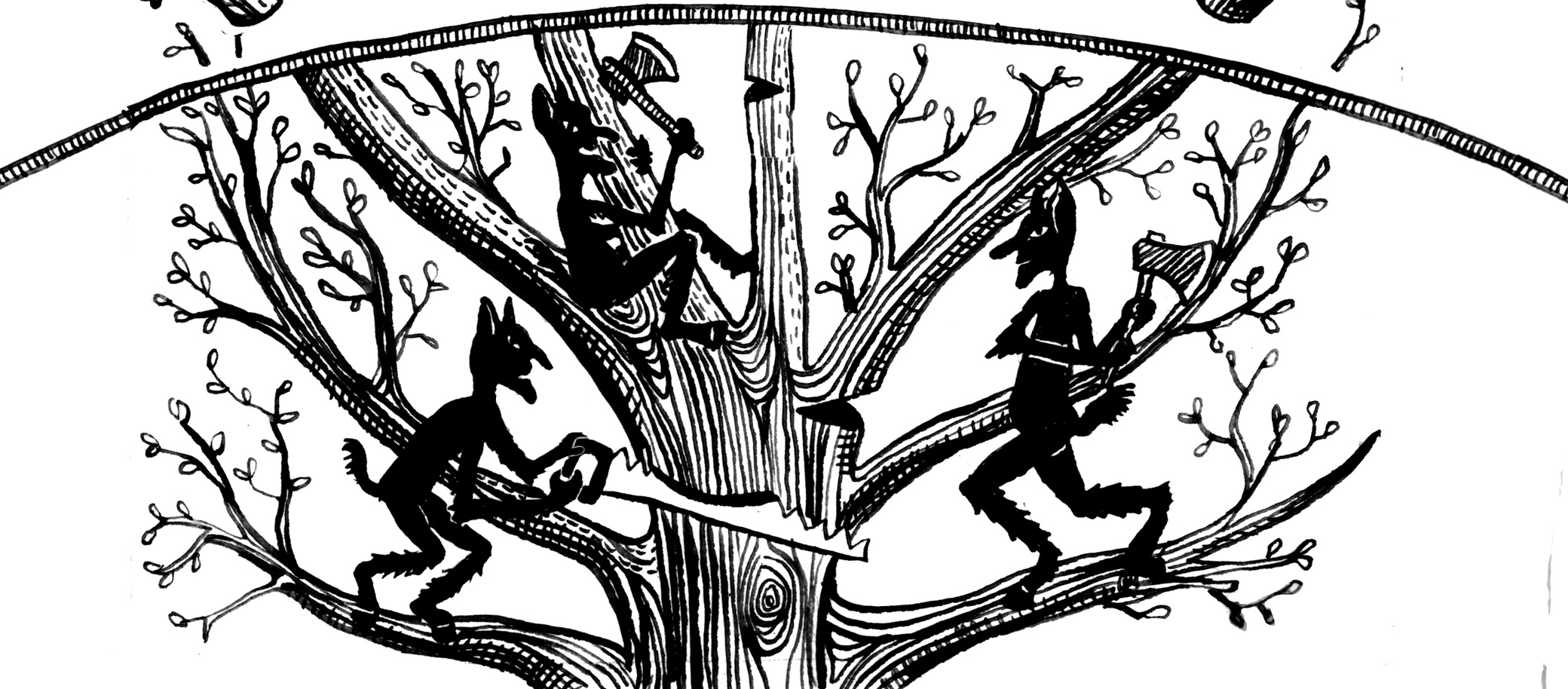
The Kallikantzaroi (Kallikantzaros, singular) is a race of goblins that dwell underground and only emerge during the 12 days for Christmas (between 25th December and 6th January). While they are underground, the goblins spend their time sawing away at the World Tree – the tree that holds up the world – but for 12 days a year, they take a break and wreak havoc over ground.
These goblins are believed to be small, dark skinned, with long black tails, and hairy bodies. They are also said to be afraid of holy water, fire, and the sun, and so only come out to play at night. During the 12 days of Christmas, the goblins play pranks on humans, steal holiday treats, and cause mayhem wherever they go. To ward off the kallikantzaroi, families light a big fire or hang strands of flax on their front door, which confuses and distracts the kallikantzaroi who cannot resist but count each strand – a task which will keep them occupied until sunrise. Some people put out a colander instead to the same effect.
At the end of the 12 days when the goblins make their way back underground, they find that the World Tree has healed itself. So they start all over again, attempting to bring down the tree and the world along with it.
How did you score?!
"ExpatGo welcomes and encourages comments, input, and divergent opinions. However, we kindly request that you use suitable language in your comments, and refrain from any sort of personal attack, hate speech, or disparaging rhetoric. Comments not in line with this are subject to removal from the site. "

















